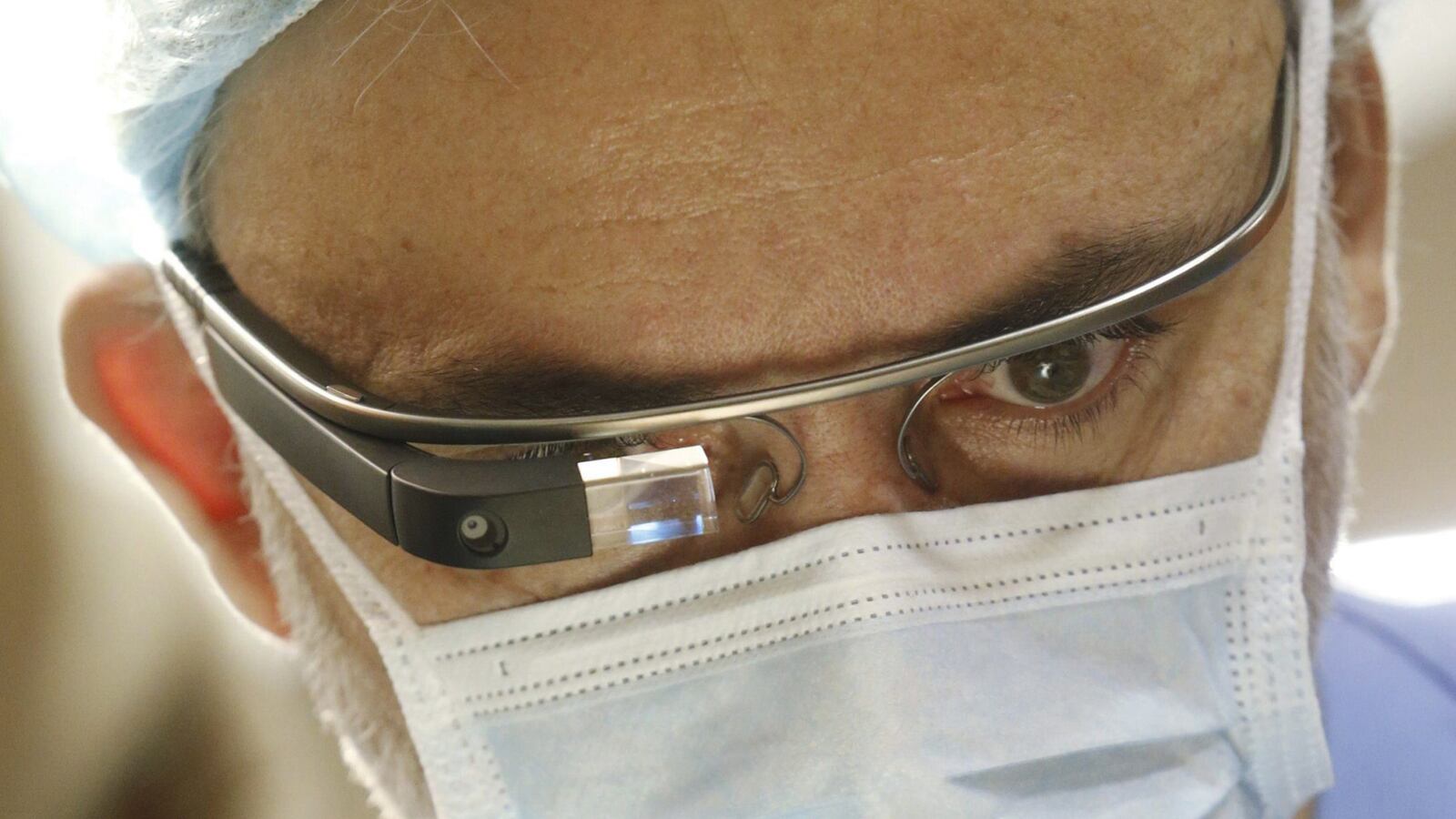When Google Glass hit the streets a few months ago, the buzz wasn’t all good. As with any new device, fears came up about privacy, security, the fear of looking like a dork, and piracy.

But in a Boston hospital, it seems Google Glass is saving lives.
In late December of 2013, Beth Israel Deaconess Medical Center (BIDMC) in Boston began testing Google Glass with four emergency room physicians. In January, they expanded it to ten additional staff members.
“We have been able to access our internal web-based ED Dashboard on Glass, in a secure manner that ensures all data stays within the BIDMC firewall,” wrote Dr. John Halamka, Beth Israel Deaconess Medical Center CIO, on his personal blog. “Clinicians can now speak with the patient, examine them, and perform procedures while simultaneously seeing data from the ED Dashboard in their field of view.
He continued: “Glass is a new medium that seems best suited for retrieval of summarized information and it really differentiates itself when it comes to real-time updates and notifications. When paired with location services, it will be able to truly deliver actionable information to clinicians in real time. We believe the ability to access and confirm clinical information at the bedside is one of the strongest features of Google Glass.”
“Beyond the technical challenges of bringing wearable computers to BIDMC,” he wrote, “we had other concerns—protecting security, evaluating patient reaction, and ensuring clinician usability.”
On Wednesday March 12, local Boston and medical blogs buzzed about a post by Halamka to his personal blog with an exciting tale of how Google Glass probably saved a life.
A patient was brought into the ER, unable to communicate his allergies or the medication he was on. Time is so crucial in these moments, and every second lost to lack of knowledge and lack of access to critical information often means one second closer to a life lost—that might have been saved.
Traditionally, an attending physician in this situation would need to leave the patient, log-in to a computer system, access what he could, and then make a decision how to proceed with treatment. With Google Glass, the patient’s information was right there, accessible to the doctor—and the doctor didn’t leave the patient’s bedside. He didn’t even have to lose eye contact. “By having this information readily available at the bedside, we were able to quickly start both antihypertensive therapy and reversal medications for his blood thinners, treatments that if delayed could lead to permanent disability and even death.”
Dr. Halamka’s original blog post has since been heavily edited to remove the potential life-saving findings. (You can see an image of the cached page here.
Dr. Halamka was not available for comment to The Daily Beast. A Beth Israel media relations representative would say only that no one is commenting on Google Glass—until their big Glass news is released in a few weeks. Presumably, this will be the announcement of BIDMC’s results of this preliminary Glass test.
In Rhode Island, amid HIPAA concerns, Glass is being used in ERs with dermatologists. An ER doctor can chat with a dermatologist via Glass, and the dermatologist can hear and see everything the ER physician does.
And in Indiana, Glass is being used in surgery to aid in the removal of tumors. The doctor is able to look at an MRI of the patient’s tumor at the same time he is removing it, enabling more precise surgery.
All fears aside, it appears Google Glass might be creating a new age in medical care, and these anecdotal stories are just the beginning of an entirely new realm of life-saving possibilities.





